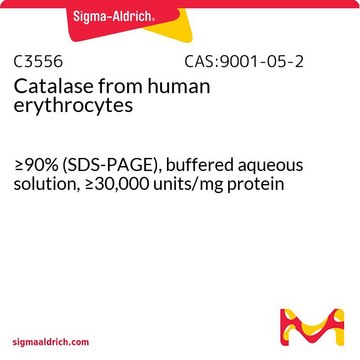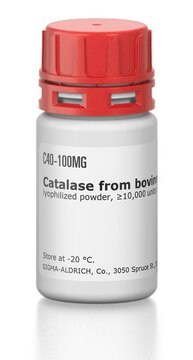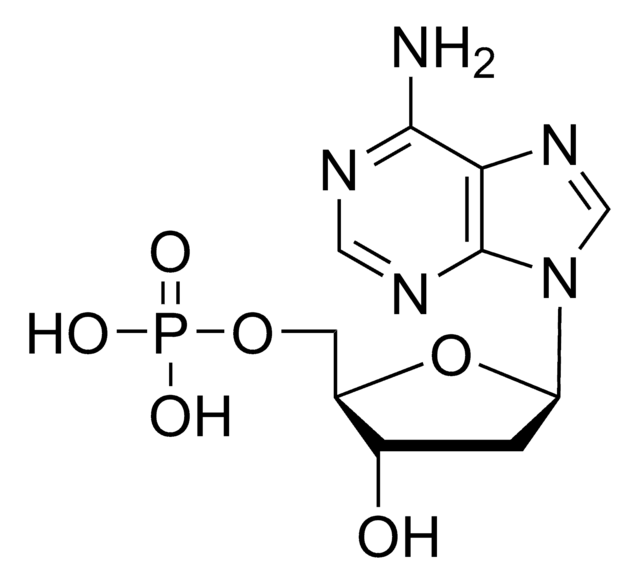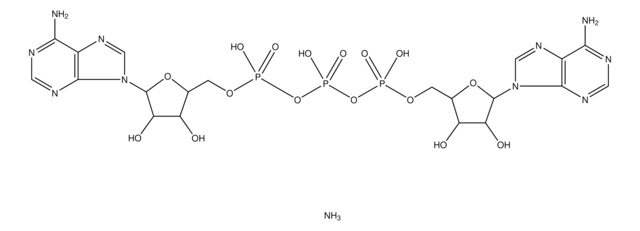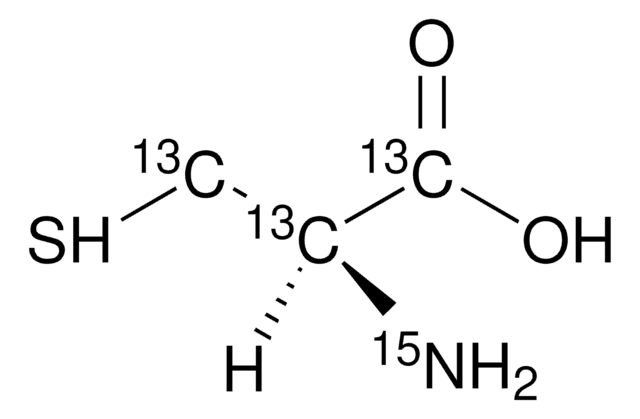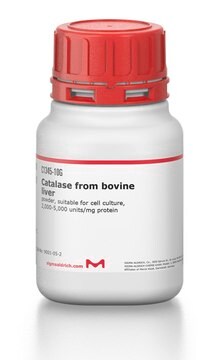C9284
Catalase−Agarose
pH 5.4(isoelectric point), ammonium sulfate suspension, enzyme from bovine liver
Synonym(s):
H2O2:H2O2 Oxidoreductase
About This Item
Recommended Products
biological source
enzyme from bovine liver
description
optimum pH ~ 7.0
form
ammonium sulfate suspension
mol wt
tetramer ~250 kDa
concentration
≥800 units/mL
extent of labeling
60,000-120,000 units per g agarose (1900-3800 units per ml of agarose)
matrix
4% cross-linked beaded agarose
pH
5.4(isoelectric point)
storage temp.
2-8°C
Application
Biochem/physiol Actions
Caution
Unit Definition
Physical form
inhibitor
Signal Word
Danger
Hazard Statements
Precautionary Statements
Hazard Classifications
Resp. Sens. 1
Storage Class Code
10 - Combustible liquids
WGK
WGK 1
Flash Point(F)
Not applicable
Flash Point(C)
Not applicable
Personal Protective Equipment
Certificates of Analysis (COA)
Search for Certificates of Analysis (COA) by entering the products Lot/Batch Number. Lot and Batch Numbers can be found on a product’s label following the words ‘Lot’ or ‘Batch’.
Already Own This Product?
Find documentation for the products that you have recently purchased in the Document Library.
Customers Also Viewed
Our team of scientists has experience in all areas of research including Life Science, Material Science, Chemical Synthesis, Chromatography, Analytical and many others.
Contact Technical Service
